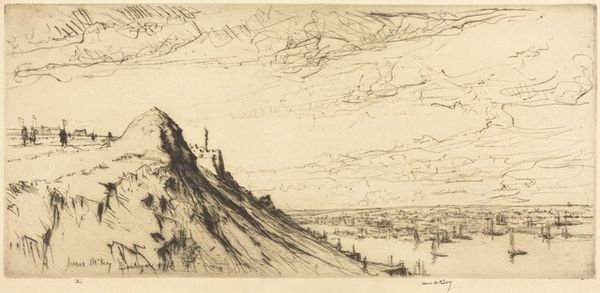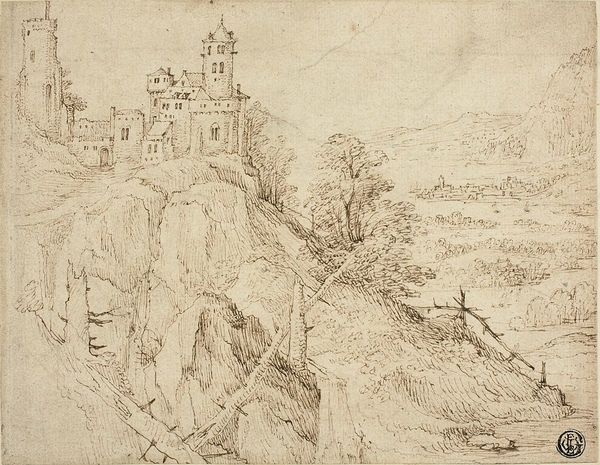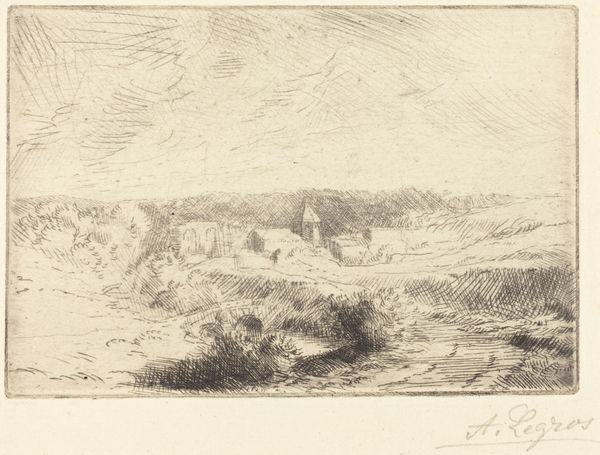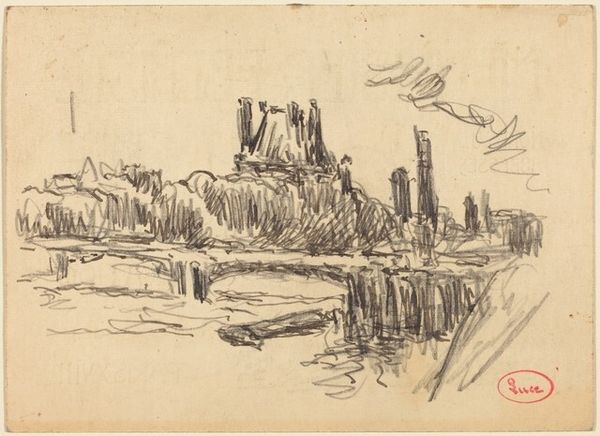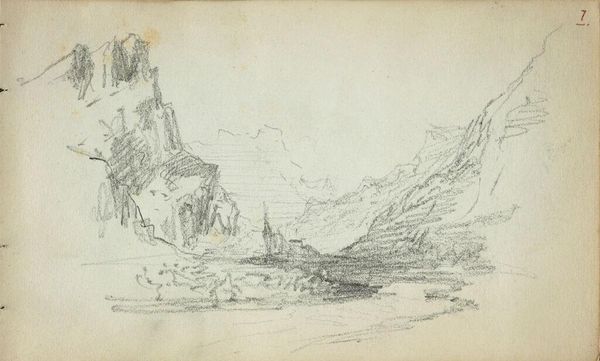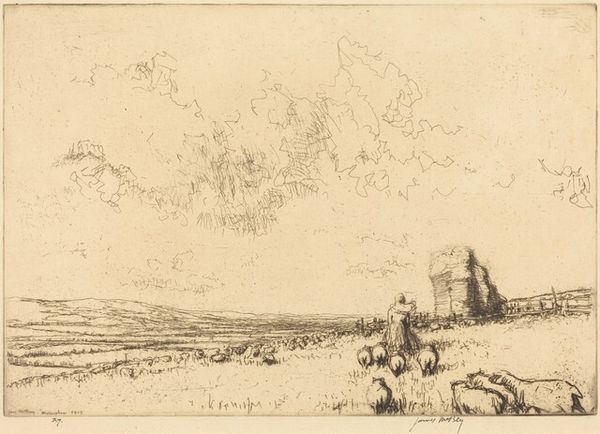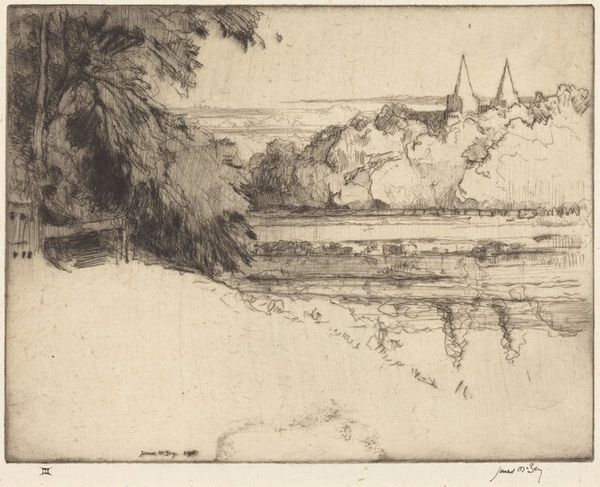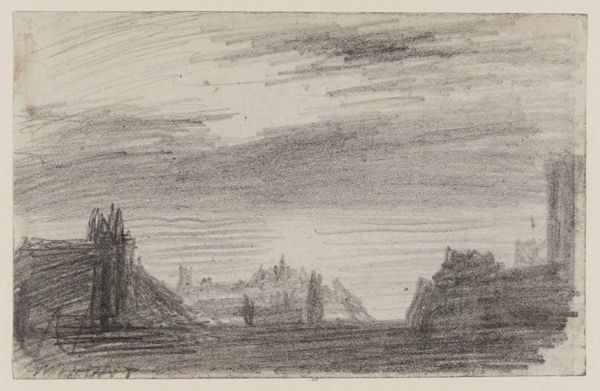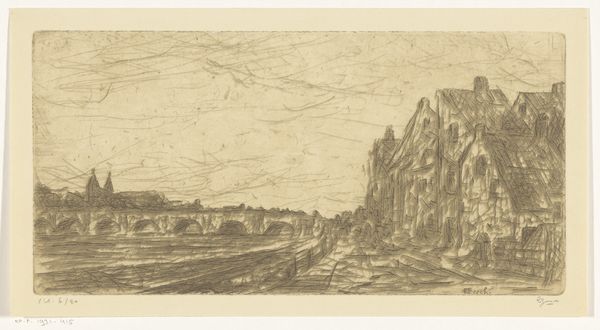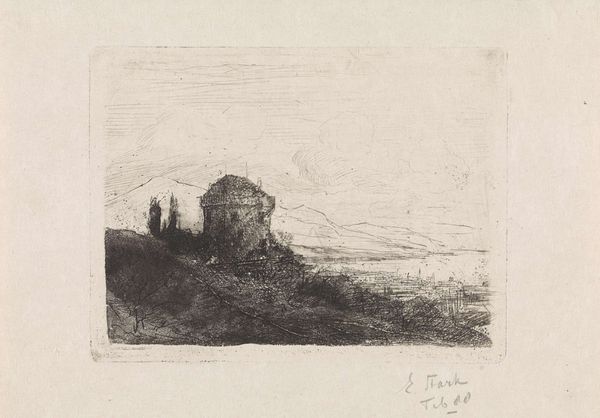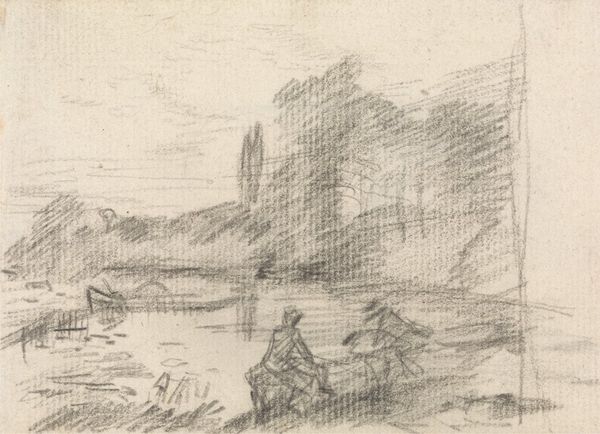
drawing, print, etching, ink
#
drawing
#
ink drawing
# print
#
pen sketch
#
etching
#
landscape
#
etching
#
ink
#
realism
Copyright: National Gallery of Art: CC0 1.0
Editor: James McBey's 1916 etching, "The Crucifix, Boulogne," has such a strong, almost urgent quality to its line work. I'm really struck by how the landscape seems to almost tumble down toward the viewer. What are your thoughts when you look at this piece? Curator: It’s hard to ignore the date, 1916, right? It immediately casts the image within the context of World War I. Boulogne was a crucial port and a major British Expeditionary Force base. The cross, therefore, isn’t just a religious symbol; it also functions as a memorial, looming over a city deeply impacted by war. Consider also McBey’s role as a war artist. Editor: That adds a whole new layer. So, it’s not simply a landscape, but a loaded, political landscape? Curator: Precisely. The "realism" isn't just about depicting what's there, but about documenting and shaping public perception of the war. Look at how the swirling clouds and frantic lines convey a sense of unease, a visual representation of the tumultuous times. How does this reading of the historical context change your interpretation of the landscape’s downward pull? Editor: It's now a descent into something much darker than just a physical space. It’s like the cross is both a beacon and a warning. The fragility and weightiness in those etched lines is particularly noticeable. Curator: And the location itself mattered. Representing Boulogne specifically could carry patriotic weight. Artists often reinforced national identities and sentiments during wartime, consciously or unconsciously shaping the visual narrative of the conflict. It reflects McBey's public role during a time of upheaval. Editor: I see it now. The piece becomes far more potent when viewed as a carefully constructed historical document, deeply entangled with the politics of its time. Thanks for this viewpoint. Curator: Indeed! And it highlights how a seemingly simple landscape etching can function as a powerful historical statement. There’s always more than meets the eye.
Comments
No comments
Be the first to comment and join the conversation on the ultimate creative platform.
